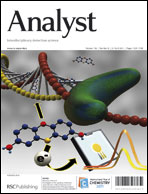In this study, we make a general comparison of the accuracy and robustness of five multivariate calibration models: partial least squares (PLS) regression or projection to latent structures, polynomial partial least squares (Poly-PLS) regression, artificial neural networks (ANNs), and two novel techniques based on support vector machines (SVMs) for multivariate data analysis: support vector regression (SVR) and least-squares support vector machines (LS-SVMs). The comparison is based on fourteen (14) different datasets: seven sets of gasoline data (density, benzene content, and fractional composition/boiling points), two sets of ethanol gasoline fuel data (density and ethanol content), one set of diesel fuel data (total sulfur content), three sets of petroleum (crude oil) macromolecules data (weight percentages of asphaltenes, resins, and paraffins), and one set of petroleum resins data (resins content). Vibrational (near-infrared, NIR) spectroscopic data are used to predict the properties and quality coefficients of gasoline, biofuel/biodiesel, diesel fuel, and other samples of interest. The four systems presented here range greatly in composition, properties, strength of intermolecular interactions (e.g., van der Waals forces, H-bonds), colloid structure, and phase behavior. Due to the high diversity of chemical systems studied, general conclusions about SVM regression methods can be made. We try to answer the following question: to what extent can SVM-based techniques replace ANN-based approaches in real-world (industrial/scientific) applications? The results show that both SVR and LS-SVM methods are comparable to ANNs in accuracy. Due to the much higher robustness of the former, the SVM-based approaches are recommended for practical (industrial) application. This has been shown to be especially true for complicated, highly nonlinear objects.


 Please wait while we load your content...
Please wait while we load your content...